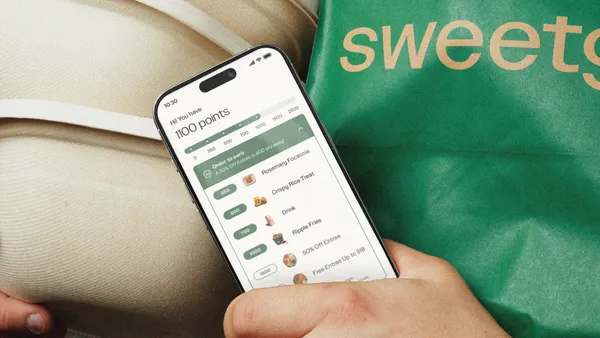Comfort food from afar. Familiar favorites with an unusual twist. A party in food form. Those are some of the overarching food trend predictions for 2021.
In many ways, the trends of 2021 will pick up where 2020 food trends were expected to go before they were disrupted by the COVID-19 pandemic. “Because all the predicted 2020 trends went into hibernation, that’s a good starting point” for what we’ll see this year, says Suzy Badaracco, president of food industry think tank, Culinary Tides. Operators should revisit ceviche, hummus, toast, ramen, poke, all-day breakfast and regional desserts in particular, she adds.
That said, 2021 will still have its own trend identity—one that will likely shift from the first half of the year to the second, says Mike Kostyo, trendologist for Datassential. “Right now, people are looking for more ways to get their health back on track. As we head later into the year, and more people are vaccinated, we’ll see them seeking out new trends and experiences again.” That means striking a balance between indulgence and healthfulness. Think trending churros dipped in pureed fruit and hearty burger patties made from meat and mushrooms.
Comfort Is King
Comfort food isn’t going anywhere in 2021. In fact, 57% of consumers say they’re interested in more comfort food trends this year—second only to health trends, Kostyo says. But comfort food is becoming more grown up and global, especially in the eyes of younger consumers.
“Gen Z, for example, came up in an age when eating more global foods was the norm. For them, tacos and ramen are considered comforting,” Kostyo explains.
International comfort foods scratch two itches right now: a desire for satisfying, hearty food combined with giving people their much-missed travel fix, says Maeve Webster, president of Menu Matters, a consulting firm for foodservice manufacturers and operators. Stews like guisado, international sandwiches and bowl meals will become increasingly popular, and “I think we’re [also] going to see continued growth in Middle Eastern foods, spices and ingredients,” she adds.
Grains such as wild rice, quinoa and wheat berries are also poised to be breakout stars this year. “Global grains especially are very calming, comforting, familiar,” Badaracco says. “But you can also be very sexy with grains and dress them up.” She recommends keeping grains true to their ethnic origins—for example, using quinoa in a Peruvian dish.
To Immunity and Beyond
Not surprisingly, health is one of consumers’ top concerns these days, and they’re turning to food and beverages as a way to boost their immune systems. The functional foods trend isn’t new—the market is expected to grow from $300 billion in 2017 to $440 billion by 2022—but it’s shaping up to be a major trend in 2021, with 60% of consumers looking for food and drinks that support immune health, according to a survey by flavor and color manufacturer Flavorchem.
Consumers are especially interested in ingredients that promote brain and immune health, Badaracco says. “It’s all about cognitive and immune function. Anything that targets sleep, depression or anxiety will go through the roof,” she says.
All of which makes ingredients like ginger, zinc, sage, turmeric and elderberry top ingredient trends for 2021. Even familiar foods like blueberries and grapes are appealing because they contain polyphenols, a type of health-boosting plant compound.
“Mushrooms are also really spiking as a coffee alternative,” Webster says.
According to Kostyo, consumers are searching for marketing messages that mention brain, immune and digestive health—and not just in obvious places like the salad menu. “Nearly half of consumers tell us they want to see immune-boosting ingredients in every food they eat, including foods like pizza and burritos,” he says.
Plant-based dishes and snacks are also expected to keep growing in 2021, with 28% of consumers saying they’ve been eating more plant-based proteins during the pandemic, according to the International Food Information Council.
“Animal protein is certainly not going away, but it’s going to account for a smaller share of the plate in favor of more innovation around produce,” Webster says.
On the Sweet Side
When it comes to dessert, operators should think regional: Instead of menuing a basic apple pie, for example, center a regional favorite like a Florida Key lime pie or a stack pie from the deep South, Badaracco suggests. Premium ingredients and seasonal flavors also will help boost dessert sales.
Although consumers don’t expect desserts to be healthy, they are drawn to those with a bit of a health halo, in the form of ingredients like almond butter or matcha, Kostyo says. Sweeteners from the sweet brown family—natural sugars, honey, maple, molasses—should resonate this year because they’re “comforting, familiar and historical to our country,” Badaracco adds.
Americans are also very much in the mood for updated twists on nostalgic flavors—especially ones that “remind them of their childhood” like birthday cake, cereal milk and S’mores, according to Lyons Magnus 2021 Flavor and Trend predictions. “Old” favorites like dark chocolate, chocolate fudge and cheesecake will dominate too.
Webster anticipates that consumers may want more single-serve, bite-size dessert portions to line up with the growing snacking trend—88% of adults say they’re snacking more during COVID-19, Flavorchem reports.
Beverage Bonanza
Imbibing is back in a big way, Badaracco says, and “the mocktail is dead.” What’s more, after months of pandemic living, consumers are “over blending up their own seven-ingredient cocktails at home” and are interested in buying them premade. Canned cocktails also are taking off, as people think of them as being more sanitary and safer in the COVID-19 era.
Adds Weaver: “Hard anything—kombucha, coffee, seltzer—is growing, as are carbonated versions of traditional noncarbonated beverages like coffee.”
Seltzers are pretty unstoppable right now, Badaracco confirms. That’s because carbonated beverages feel like a party—something people have been sorely missing—but they also come across as lighter and less caloric, she says.
Coffee- and tea-flavored food and beverage products also will be big in 2021, according to Lyons Magnus, showing up in everything from smoothies, milkshakes and lemonades to candy, yogurt and even barbecue sauce. SONIC Drive-In, for example, recently rolled out a selection of espresso shakes.
How to Deliver What Consumers Want
Catering to 2021 trends will be a bit of a tightrope walk. It will mean finding ways to liven up familiar favorites and drawing on new global comfort food options. Many consumers are also choosing where to dine based on price and portion sizes, including wanting to have leftovers for lunch or dinner the next day, Badaracco says.
Menuing creative hybrid dishes, following COVID-19 safety protocols and offering something that people can’t do themselves are all ways to stand out from the competition. “Consumers are tired of being at home, they’re tired of eating pizza every night. They want to see foods they can’t make at home or don’t want to make at home,” Kostyo says.










